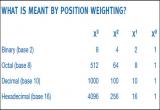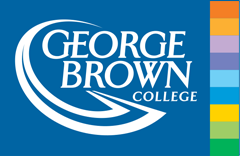
News Blogs
Over the years, we’ve had many questions about the certificate that graduates receive upon completion of a George Brown College online Technical Training Certificate program. We often get questions about what it looks like, its value, the accreditation it carries, and how it prepares you for a career in the industry.
Read MoreWith tax season quickly approaching, it’s time to start preparing and gathering all relevant receipts and paperwork to file your taxes! GBC Technical Training students whose tuition fees have totaled at least $100 are eligible to receive a tax credit for tuition fees through the Tuition, Education and Textbook Amounts Certificate (T2202A).
Read More
Computer simulations have greatly evolved with progress in computer science over the past few decades. With origins in a math experiment during WWII, simulation technologies now have widespread applications in various industries ranging from healthcare to manufacturing to entertainment. Simulation tools have found numerous successes and advantages in education, being used for teaching, training, and testing applications.
Read More
In this installment of The Practicing Technicians Series we will be discussing the significance of power factor correction. As a technician, you may be responsible for monitoring and adjusting the power factor of your industrial operation. Many industrial applications involve induction motors or other equipment that results in supply voltage and supply current being out of phase. This is wasteful and expensive for power providers.
Read More
LinkedIn might seem like it’s only for office workers, but this is no longer the case. Nowadays, every industry—including manufacturing—is on LinkedIn. There’s a large number of recruiters looking to fill technical positions on the platform, too. In fact, over 90% of recruiters will scan your LinkedIn profile as part of the recruitment process.
Read More
Two commonly misunderstood types of training are certificates and certifications. Both provide important value, but are quite different in terms of purpose, content, oversight and commitment required to complete them. Selecting the right training will ultimately increase your hire ability and/or value to your employer.
Read More
Technicians often encounter values expressed in binary, octal, or even the hexadecimal number systems. In our fifth installment of The Practicing Technician’s Series, today’s discussion focuses on characteristics that are common to all of these number systems.
Read More